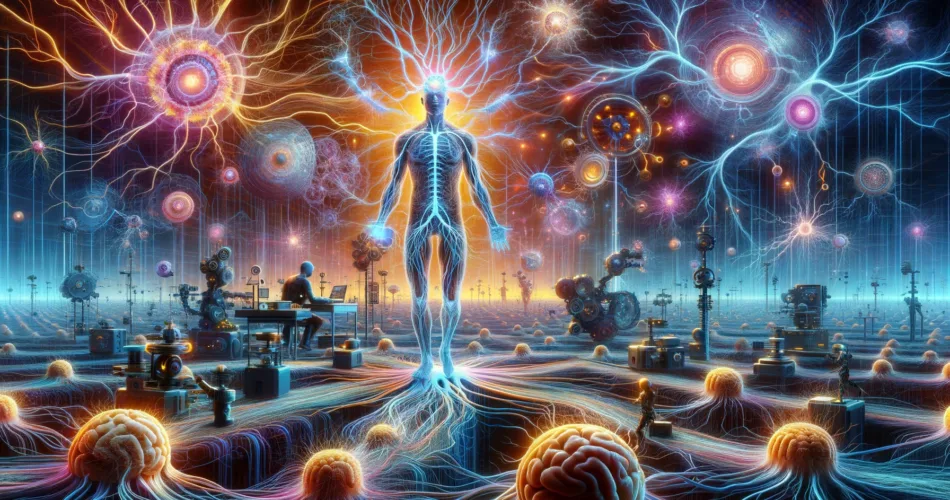The human body, a complex tapestry of systems, plays host to an array of mechanisms that safeguard, nourish, and mobilize us. However, towering above them all is the nervous system, the master controller, the architect of our reactions, emotions, ideas, and memories. This intricate network, a universe within us, orchestrates every blink, every shiver, every tear, and every laughter, making it the essence of what truly makes us unique. In this exploration, we dive deep into the nervous system’s realm to uncover the systems that define our humanity, examining its components, functions, and the miraculous ability to adapt and transform who we are.
The Brain: The Command Center
Nestled within the skull’s protective embrace lies the brain, a three-pound marvel of grayish-white matter that operates in total darkness. Comprising over 80% water, with traces of fat and protein, it stands as the mission control of the human body. This processing powerhouse, connected to a vast network of nerves and fibers, seamlessly translates data into action, orchestrating our responses to life’s myriad challenges.
Neurons: The Building Blocks of Thought
At the heart of the brain’s functionality are neurons, specialized cells that communicate through electrical and chemical signals at astonishing speeds. Unlike other cells, neurons possess a unique architecture, with strands branching out to connect with other neurons, facilitating the rapid exchange of information. This network, comprising 100 billion neurons in the brain alone, enables us to think, decide, imagine, and perceive the world around us.
Training the Brain: The Power of Neuroplasticity
One of the nervous system’s most remarkable features is its plasticity—the ability to train neurons to master almost any task. This adaptability not only allows us to hone new skills but also to transform our very identities. Through persistent practice, neural pathways become more entrenched, and the connections between different brain regions strengthen, illustrating the profound impact of neuroplasticity on personal development.
The Sensory Gateway: How We Perceive the World
Our senses, particularly sight, serve as the primary interface between the brain and the external environment. Light particles, upon entering the eye, trigger a cascade of electrical signals that travel at lightning speeds to the brain, translating these inputs into our perceived reality. This complex process, involving the retina, optic nerve, and brain, underscores the intricate design of our sensory system.
Mastering Emotions and Fear: The Role of the Amygdala
Emotions, integral to the human experience, are closely managed by the nervous system, with the amygdala playing a pivotal role. This small, almond-shaped structure triggers the fight or flight response, preparing the body to face or evade threats. Understanding and managing this response is crucial for overcoming fear and adapting to stressful situations, highlighting the amygdala’s significance in emotional regulation.
The Spinal Cord: The Information Superhighway
The spinal cord, an extension of the brain, forms a crucial part of the nervous system’s infrastructure. This bundle of nerve fibers acts as a communication superhighway, relaying messages between the brain and the rest of the body. Its design ensures seamless interaction with every organ and muscle, enabling a coordinated response to external stimuli.
Overcoming Adversity: The Nervous System’s Resilience
The nervous system’s capacity for adaptation and recovery is nowhere more evident than in individuals overcoming physical challenges. Through innovative technologies, such as neural interfaces for prosthetic limbs, we are beginning to unlock new realms of possibility. These advancements not only restore lost functions but also offer a glimpse into the future of human potential, underscoring the nervous system’s role in shaping our resilience and adaptability.
Conclusion: A Testament to Human Potential
The nervous system, with its unparalleled complexity and adaptability, underscores the essence of our being. From controlling our physical actions to shaping our thoughts and emotions, it represents the pinnacle of biological engineering. As we continue to explore and understand this incredible system, we unlock the keys to enhancing our capabilities, overcoming limitations, and ultimately, realizing the full spectrum of human potential.

